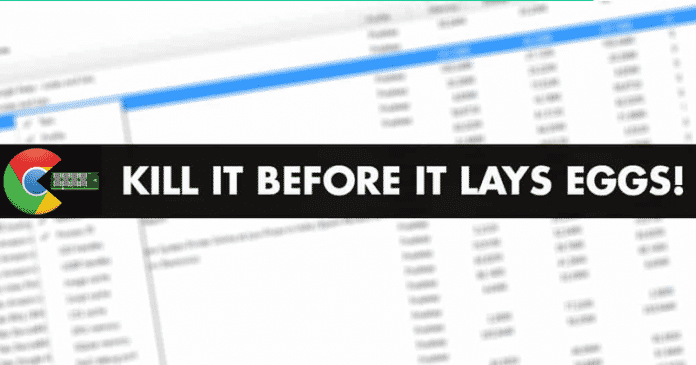

We all know very well that the tech giant Google’s Chrome browser is the world’s most used web browser and offers tons of features that simply lure every internet users. Though it offers tons of features, that doesn’t mean it doesn’t have any bug. As, we all know very well that the tech giant Google’s most used web browser, of course, Chrome is also well-known for its overuse of RAM. Therefore, you may notice that sometimes it is laggier than others, especially if you have a computer with a low RAM capacity.
How To Know Which Chrome Tabs Are Consuming More RAM CPU
The tech giant Google’s Chrome browser is the world’s most used web browser and offers tons of features that simply lure every internet users. Though it offers tons of features, that doesn’t mean it doesn’t have any bug.
As, we all know very well that the tech giant Google’s most used web browser, of course, Chrome is also well-known for its overuse of RAM. Therefore, you may notice that sometimes it is laggier than others, especially if you have a computer with a low RAM capacity. Hence, here in this article we will show you how to know and kill which pages that are consuming more RAM in Chrome. So, now without wasting much time let’s get started and explore the whole tutorial that we have mentioned below.
Also Read: How to Make Websites Load Faster In Google Chrome On Android
What you have to do is open the Chrome task manager. It is very similar to the typical Windows and will show you exactly what resources each page consuming, extension or application in the background that you visit or install.
Before you start you have to be clear that with this administrator access your browser is not in danger since nothing you touch on it which will “spoil” anything. The only annoyance that you can find is to unintentionally close a tab or process, that you have to re-open it manually afterward.
- So, the first thing you have to do is open the task manager of Chrome.
- If you use Windows or GNU/Linux it will be enough to press the Shift + Esc keys simultaneously. In macOS there is no direct access or hotkey, so you will have to enter navigating the menus.
- To do this, click on the options icon at the top right, choose More tools and click on the Task Manager option.

- By doing so, a new window will appear which will show you in a list what your browser is using. Specifically, it will tell you the web pages you have open in each tab, the extensions, the applications in the background, the sub-frames or other internal processes.

- By default, the administrator will show you four statistics for each element. The Memory footprint is the one that shows you the RAM that each one consumes, that is what we come to know about, but you can also measure the CPU and data consumption of your network as well.
- Finally, there is a column with the identifiers of each of the processes. You can also see many more columns with more information by right-clicking on the process and then simply select by clicking on the information that you want to show.

- If you click once on the name of one of the processes you will select it, and if you double click it will show it in Chrome.
- You can also organize the processes so that if you click on the Memory box it will simply organize them depending on consumption, whether it is higher to lower or lower to higher. You can even click several times to organize them in different ways.
- If you think that a page or process is consuming too much resources, then you can simply close it from the browser or directly from the administrator simply by clicking the End process button located at the right part of the window.
- That’s it, now you are done.
Also Read: 20 Best Google Chrome Tricks and Tips
So, what do you think about this? Simply share all your views and thoughts in the comment section below. And if you liked this tutorial then simply do not forget to share this tutorial with your friends and family.

